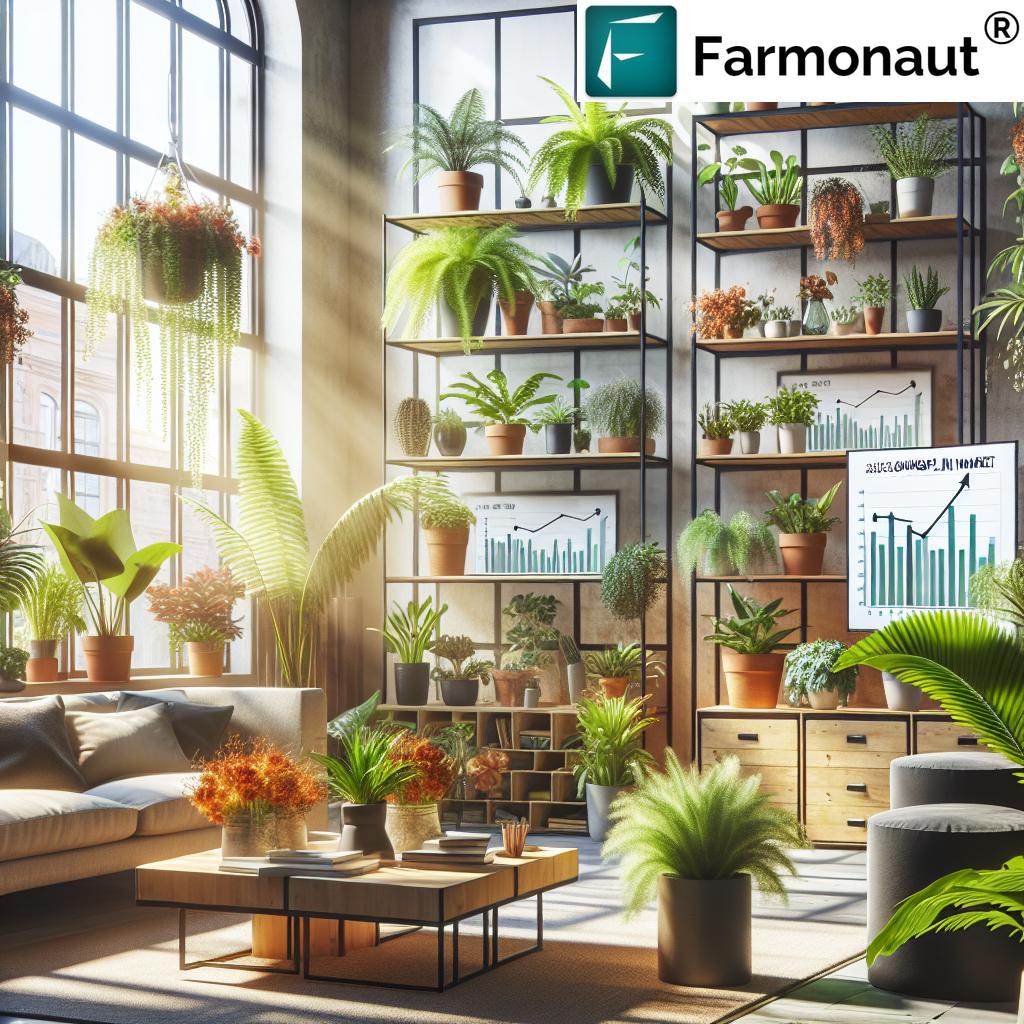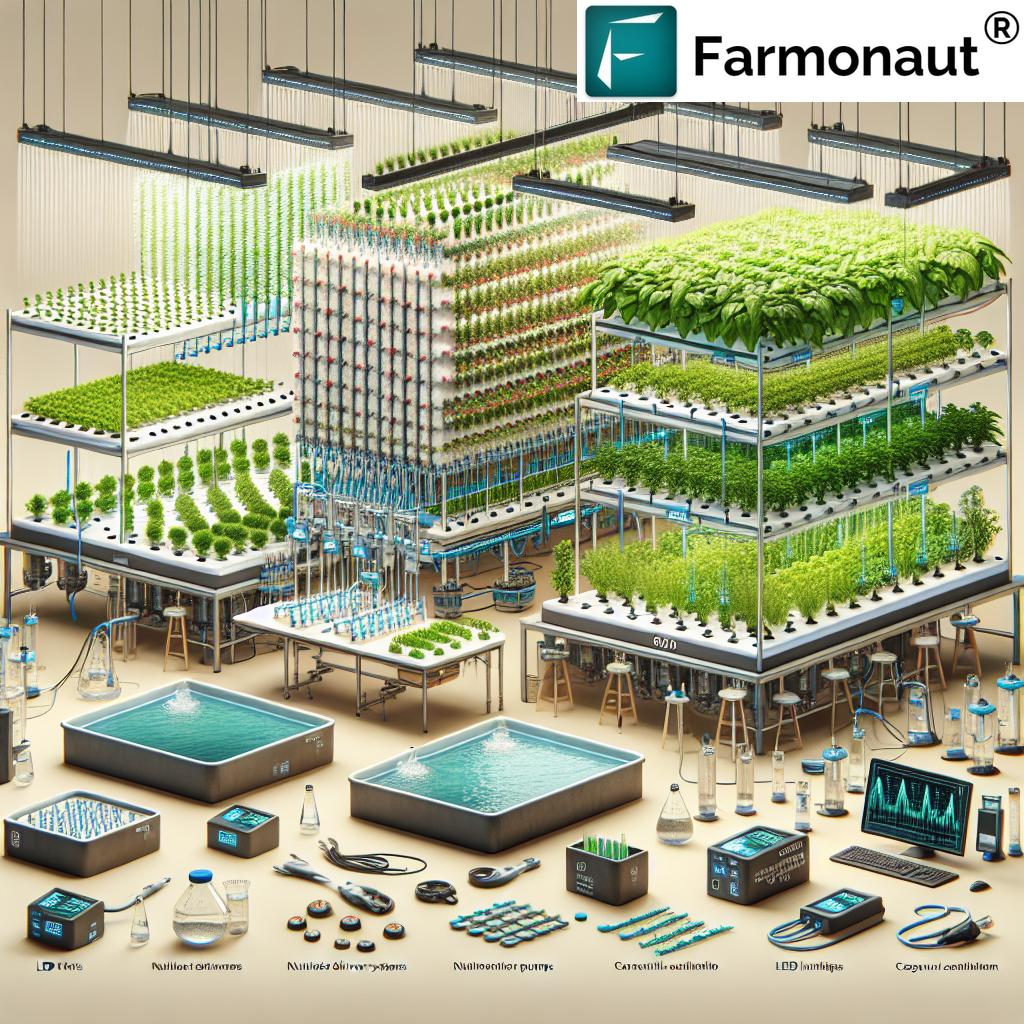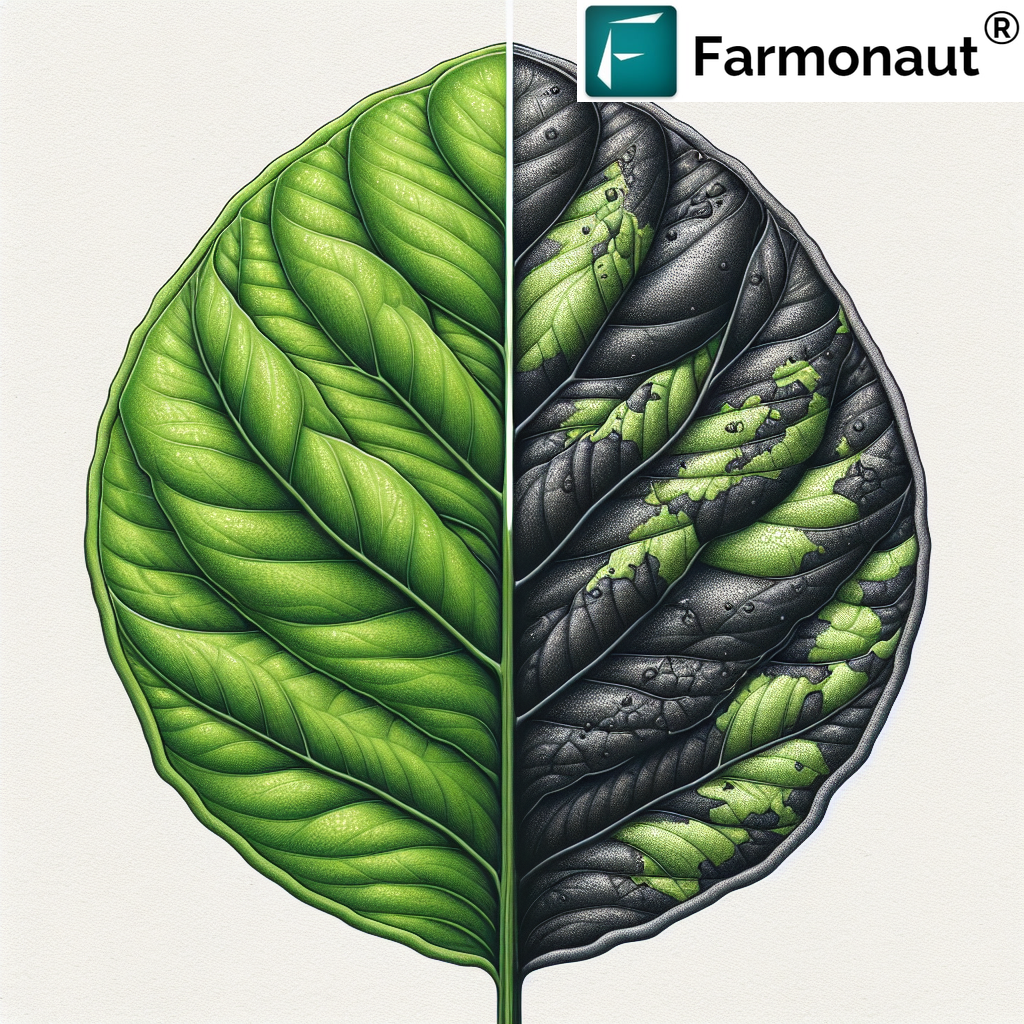Houseplant Market Size 2024: Growth & Benefits
“The global houseplant market is projected to reach $24.3 billion by 2024, driven by rising eco-conscious consumer demand.”
“Sustainable cultivation methods now account for over 35% of houseplant production, reflecting a shift toward greener indoor living.”
Table of Contents
- Market Overview: Houseplant Expansion in 2024
- Demographic Trends: The Drivers of Houseplant Market Growth
- The Economic Impact of Houseplants on Agriculture & Local Economies
- Health & Environmental Benefits of Indoor Plants
- Integration of Agriculture and Forestry for Sustainable Houseplant Cultivation
- Challenges & Urban Gardening Opportunities
- Current Trends in the Indoor Plant Industry
- Farmonaut: Enabling Sustainable Agriculture in the Houseplant Revolution
- Consumer Education & Engagement: Growing the Next Generation of Plant Owners
- Houseplant Market Size and Environmental Benefits: 2022–2024 Table
- FAQs: Houseplant Market Size 2024 & Green Benefits
- Conclusion: A Green Revolution in Agriculture, Farming & Forestry
Market Overview: Houseplant Expansion in 2024
The houseplant market has blossomed into one of the most compelling sectors within agriculture, farming, and forestry. Marked by consistent expansion, houseplant market growth is reshaping our approach to green living, offering substantial economic, sustainable, and therapeutic benefits. As of 2024, market estimates place the global houseplant industry value at $24.3 billion, up from $13.6 billion in 2021 (analytica.global).
The compound annual growth rate (CAGR) for the sector is a solid 3.88%, and in the United States, houseplant sales are set to reach $3.7 billion by 2025 (gitnux.org). These figures underscore how the intersection of urbanization, health benefits of indoor greenery, and eco-conscious consumerism are mutually reinforcing the market’s momentum.
Several key factors drive this surge:
- Urbanization – More people are living in urban areas, increasing the demand for nature-inspired interiors and the comfort of plants.
- Awareness of Plant Benefits – Better environmental awareness means more consumers are seeking out sustainable, healthy choices, including indoor plants that purify air and boost well-being.
- Therapeutic effects – The calming, restorative vibes that houseplants provide are highly sought after, especially in high-stress environments.
- Growing indoor gardening trend – Platforms and communities support the rise of urban indoor gardening, offering tools, tips, and resources for everyone from novices to experts.
Overall, this market expansion reflects a widespread embrace of green living and the integration of eco-friendly practices into everyday farming, agriculture, and forestry operations.
Demographic Trends: The Drivers of Houseplant Market Growth
Behind every market revolution lies a shift in consumer behaviors and values. In the case of the houseplant market, demographic data shows powerful drivers working across age groups:
- Millennials: This generation represents the primary driver of houseplant purchases—with a remarkable 65% increase in sales in 2021 (terrariumtribe.com). Their affinity for sustainable living and desire to enjoy calming, biophilic effects at home and work fuel ongoing market expansion.
- Generation Z and Generation X: While millennials spearhead the movement, Gen Z and Gen X are rapidly contributing to the growing demand, evidencing how appeal for indoor greenery transcends age groups.
- Broader acceptance: Boomers and traditionalists are also joining the movement, motivated by health benefits, ease of plant care, and retail accessibility.
These trends exemplify how houseplants are no longer niche décor but a cultural staple, supporting biodiversity and promoting sustainable agriculture at scale.
The Economic Impact of Houseplants on Agriculture & Local Economies
As the houseplant sector flourishes, so too does its economic impact across agriculture, farming, and local economies. In 2020, the U.S. plant and flower growing sector was valued at $15.23 billion—projected to reach $15.85 billion in 2021 (terrariumtribe.com). Globally, this trajectory grows even steeper with online sales, retail, distribution, and niche plant propagation businesses generating jobs and stability.
Key areas of economic influence include:
- Cultivation & Production: Creating and maintaining greenhouses, urban farms, and sustainable propagation centers supports jobs in agricultural and botanical sciences.
- Distribution Networks: Efficient logistics and online marketplaces broaden reach, while supporting local nurseries, florists, and specialty plant stores.
- Retail Expansion: Plant stores diversify, offering workshops, community engagement programs, and educational resources, increasing footfall and retail sales.
- Employment Opportunities: The sector encompasses labeling, distribution, after-sales care, and plant education—directly fueling local economies.
In summary, the economic impact of houseplants goes far beyond interior trends and individual wellness—it’s a driver for sustainable employment, supports local economies, and helps underpin the integration of agriculture and forestry in the green economy.
Health & Environmental Benefits of Indoor Plants
Few other interior elements provide the environmental and health benefits of indoor plants—making houseplants one of the most powerful allies for our well-being and the planet.
Therapeutic Benefits of Houseplants
- Improving Air Quality – Houseplants filter pollutants such as formaldehyde, benzene, and trichloroethylene from indoor air, releasing fresh oxygen (fortunebusinessinsights.com).
- Alleviating stress – Studies show proximity to indoor greenery alleviates stress and boosts mood, promoting overall mental health, productivity, and creativity (maxapress.com).
- Supporting wellbeing – Interacting with plants during repotting or watering offers therapeutic effects, providing mindfulness and a break from digital stressors.
Environmental Benefits of Indoor Plants
- Carbon capture & emission reduction— Houseplants reduce carbon footprints by absorbing CO2, offsetting emissions in urban and indoor environments.
- Supporting biodiversity and houseplants— Ethical cultivation practices support diverse plant genetics, pollinator access, and ecological stability.
- Improving humidity and microclimates— Indoor plants increase humidity, stabilize temperatures, and reduce noise—creating healthier, more comfortable living spaces.
- Promoting sustainable production— Sourcing native species and sustainable propagation limits the spread of invasive plants and minimizes negative environmental impact.
The move toward sustainable houseplant cultivation isn’t just a fad—it’s a vital response to climate challenges, urban pollution, and the pursuit of enhanced living standards in increasingly dense cities.
Integration of Agriculture and Forestry for Sustainable Houseplant Cultivation
Successful houseplant production connects closely with traditional agriculture and forestry through technology, sustainable methods, and a focus on biodiversity.
Cultivation Methods & Advances
- Micropropagation: This method uses tissue culture to rapidly produce high-quality, disease-free houseplants. It enables breeders to offer rare or endangered species without damaging wild populations (maxapress.com).
- Controlled-Environment Agriculture (CEA): Innovative systems (hydroponics, vertical farms) optimize water and nutrients, boost yields, and minimize land use—a pivotal change for producers in urban settings.
Sustainable Sourcing & Biodiversity
- Sustainable Propagation: Native species and environmentally responsible propagation practices protect wild stocks and support biodiversity.
- Ethical Supply Chains: By favoring certified, traceable sources, growers align with the sustainability values of modern consumers.
Learn more about blockchain-based traceability for agricultural production and supply chains, which ensures transparency from propagation to purchase:
Farmonaut Product Traceability Solutions – By ensuring product origin and movement are securely documented, producers and retailers can build trust and support sustainable business.
Agroforestry & Urban Greenery
- Agroforestry Integration: Including houseplant cultivation in agroforestry systems offers dual economic and ecological opportunities. Farmers diversify income while promoting healthy, multi-layered ecosystems (Wikipedia).
- Urban Gardening Opportunities: As more people seek to participate in the houseplant revolution, urban rooftop farms, community gardens, and balcony nurseries have risen in popularity, bringing sustainability to city dwellers.
When agriculture and forestry intersect through sustainable houseplant production, the result is an industry that supports both environmental and economic goals.
Challenges & Urban Gardening Opportunities
Despite the vibrant growth, several challenges currently face the houseplant industry—balancing them with emerging opportunities is key for long-term sustainability.
Challenges in the Houseplant Market
- Supply Chain Disruptions: Extreme weather events, rising temperatures, and unpredictable precipitation patterns impact plant quality, availability, and overall production costs (imaginationpersonified.com).
- Labor Shortages: As production increases, skilled labor for cultivation and distribution is in short supply, raising operational costs.
- Resource Constraints: Urban growers face space limitations, competing uses for water and energy, and stringent environmental regulations.
Opportunities: Technological Innovation & E-commerce
- Vertical Farming and Hydroponics: These technologies enable indoor plant production in compact, resource-efficient settings, supporting urban gardening opportunities.
- Houseplant Sales Online: Digital platforms are booming—online plant sales grew 25% in 2023 to $1.2 billion, making exotic and rare plants accessible to a global audience.
- Eco-Friendly Packaging and Distribution: Reducing plastic, using biodegradable materials, and streamlining transportation further minimize environmental impacts.
Growers, distributors, and retailers who innovate using sustainable methods and technology are best positioned to lead this green revolution.
“Sustainable cultivation methods now account for over 35% of houseplant production, reflecting a shift toward greener indoor living.”
Current Trends in the Indoor Plant Industry
2024 brings new directions for indoor plant industry trends. From eco-friendly practices to digital communities and transparent supply chains, the following trends shape the modern marketplace:
- Sustainable Houseplant Cultivation: Over 35% of commercial houseplants now originate from sustainable cultivation methods, reflecting deepening consumer demand for ethical products.
- Technology-Driven Transparency: Blockchain and satellite-driven insights are being used to provide buyers with full transparency into the origin, health, and movement of their plants.
- Accessible Online Education: Digital platforms and community groups guide new plant owners, offering propagation tips, care instructions, and problem-solving forums—driving engagement and repeat purchases.
- E-Commerce Expansion: With platforms tailored for houseplants sales online, consumers can access rare species, robust care information, and plant selections that would be otherwise unavailable locally.
- Agroforestry and Urban Farming Integration: More growers blend houseplants into agroforestry projects, boosting biodiversity, economic resilience, and environmental benefits.
Retailers and growers who support biodiversity and houseplants with transparent, eco-conscious, and tech-enabled solutions are leading the way.
Explore how Farmonaut’s digital solutions drive transparency and sustainability for large-scale agriculture and forestry management:
Farmonaut Large-Scale Farm Management – Our platform empowers agribusinesses and government agencies to manage fields, plantations, and forests with satellite-based insights, resource optimization, and compliance monitoring.
Farmonaut: Enabling Sustainable Agriculture in the Houseplant Revolution
At Farmonaut, we recognize that data-driven innovation is the key to thriving in the climate-driven, consumer-conscious world of modern agriculture and the houseplant market. By offering advanced, satellite-based crop health monitoring, artificial intelligence advisory, blockchain traceability, and carbon footprinting tools, we’re making precision agriculture accessible, affordable, and scalable worldwide.
- Real-time Crop Health Monitoring: Our platform leverages multispectral satellite imagery—from NDVI plant health to soil moisture—empowering growers and agribusinesses to make informed, sustainable decisions.
- AI-powered Advisory (Jeevn AI): By combining crop, weather, and satellite data, we deliver personalized farm guidance that optimizes productivity and resource use.
- Blockchain Traceability: With transparent supply chain tracking, we help secure the journey of houseplants and agricultural products from propagation to consumer, strengthening trust and supporting sustainability goals. Explore our solution here: Product Traceability Solutions.
- Carbon Footprinting: Our carbon calculations help users understand the full environmental impact of their farm operations. Learn more about reducing your carbon emissions.
- Fleet and Resource Management: For large-scale houseplant retailers and growers, our Fleet Management Solution optimizes logistics and resource flow, reducing both costs and emissions.
Our flexible platform operates via web, Android, and iOS apps:
Are you a developer or want to integrate satellite data into your agricultural system? Check out our Farmonaut API and developer documentation for seamless integration of our precision agriculture data and weather insights.
Our mission is to empower everyone in the plant industry—from individual growers to large agribusinesses and organizations—using affordable precision technology to promote sustainable agriculture and maximize the benefits of the green revolution.
Discover how our platform enables smarter, greener farming, plantation, and forest management: Crop Loan and Insurance Solutions for satellite-based verification and financial access and Crop, Plantation, and Forest Advisory App for hands-on AI guidance in every field.
Consumer Education & Engagement: Growing the Next Generation of Plant Owners
The future of sustainable houseplant market growth depends in large part on consumer education, engagement, and community support.
- Accessible Guidance: Businesses, experts, and digital platforms are providing beginner-friendly guides, care tips, and propagation instructions to help consumers succeed.
- Community Engagement: Social networks, local workshops, and online communities foster supportive environments for plant enthusiasts to share, learn, and problem-solve.
- Ongoing Support: After-sales plant care, troubleshooting advice, and seasonal maintenance reminders enhance satisfaction and customer loyalty.
New technologies, such as Farmonaut satellite-based monitoring, can further enhance both professional and consumer education by providing transparent, data-driven insights into plant health and optimal cultivation practices.
Houseplant Market Size and Environmental Benefits: 2022–2024 Table
| Year | Global Market Size (USD Billion) | Annual Growth Rate (%) | Major Trend (e.g., Sustainable Cultivation) | Environmental Benefit (e.g., CO₂ Reduction) |
|---|---|---|---|---|
| 2022 | $20.0 | 3.9 | Demand for sustainable houseplant cultivation begins to outpace conventional production | Increased indoor air quality awareness; initial push for CO₂ reduction |
| 2023 | $22.1 | 4.0 | Major houseplant producers adopt micropropagation and hydroponics | Noticeable biodiversity gains; indoor plants’ pollutant filtering capacity recognized |
| 2024 | $24.3 | 4.1 (projected) | Sustainable cultivation surpasses 35% of total production; transparent sourcing becomes standard | CO₂ emissions drop further in urban areas; improvement in urban humidity and well-being |
“The global houseplant market is projected to reach $24.3 billion by 2024, driven by rising eco-conscious consumer demand.”
FAQs: Houseplant Market Size 2024 & Green Benefits
What is the forecasted houseplant market size for 2024?
The global houseplant market is projected to reach $24.3 billion in 2024, reflecting ongoing urbanization, sustainability trends, and the therapeutic popularity of indoor plants.
Which demographic groups are driving market growth?
Millennials remain the primary driver, with significant increases in purchases. However, Generation Z, X, and older age groups are also increasingly engaging in sustainable houseplant cultivation.
How do houseplants benefit the environment?
Houseplants filter indoor air pollutants, release oxygen, support biodiversity, reduce urban CO₂, and improve humidity and microclimate—all of which are vital environmental benefits of indoor plants.
What are the biggest challenges facing the industry?
Current challenges include supply chain disruptions (partly due to climate change), labor shortages, resource constraints, and the need for continued consumer education.
How are technology and e-commerce changing the market?
E-commerce has broadened access to rare and diverse plants globally, with online plant sales exceeding $1.2 billion in 2023. Technologies like satellite monitoring, blockchain, and hydroponics are improving production, traceability, and sustainability across the industry.
How can I access Farmonaut’s advanced agricultural technology for my houseplant business or farm?
Farmonaut offers satellite-based crop health monitoring, resource management, traceability, and AI-powered advisory via web, Android, and iOS apps. Businesses, growers, and organizations can optimize sustainability and productivity with our platform.
Explore Farmonout API for direct integration, and view our API documentation here.
What actions can consumers take to support sustainable houseplant industry trends?
Choose houseplants from transparent, ethical sources; support eco-friendly packaging and propagation; educate yourself on care best practices; and recycle or upcycle plant containers.
Conclusion: A Green Revolution in Agriculture, Farming & Forestry
The trajectory of houseplant market growth points to a profound green revolution for agriculture, farming, and forestry. By prioritizing sustainable production, transparent supply chains, and comprehensive consumer education, we can reinforce urban as well as rural ecosystems, support local economies, and foster a culture of ecological responsibility and well-being.
Houseplants—once a symbol of décor—are now at the heart of the green revolution, connecting us with nature, boosting health, promoting biodiversity, and helping mitigate climate change.
By leveraging precision agriculture technology (like that provided by Farmonaut), adopting sustainable cultivation practices, and supporting the next generation of plant enthusiasts, the industry can meet both present opportunities and future environmental challenges.
The future is lush, green, and connected—join the revolution!














